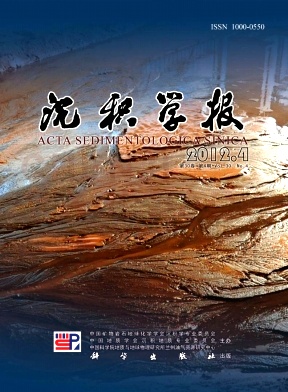Ree Geochemical Characteristics of Sediments and Its Implications in the Deepwater Area of the Northern South China Sea
- Publish Date: 2012-08-10
-
Key words:
- REE /
- sedimentary source /
- the northern part of the South China Sea /
- Baiyun Sag /
- sedimentology /
- /
Abstract: The Rare Earth Element study of sediments in the Baiyun deepwater area of the northern South China Sea shows three chondritenormalized REE distribution characteristics in different parts of the deepwater area from Oligocene to Miocene, indicating that different provenances may dominate the deepwater area. From the Oligocene to the Miocene, the sediments of the northern Baiyun deepwater area came from the paleoPearl River, featuring relative LREE (light rare earth element) enrichment, even content of HREE (heavy rare earth element) and negative Euanomalies, just like the chondritenormalized REE pattern of PAAS (postArchean average Australian shale). This REE characteristic suggested a parent rock type of sedimentary rocks or acid rocks or both. The sediments of the southern part of Baiyun deepwater area showed reduced divergence between LREE and HREE with obvious positive Euanomalies, suggesting a supply of basic materials. Well B6 located on a volcanic island in the central part of the Baiyun deepwater area. The Oligocene sediments of Well B6 contained a large amount of intermediate to basic volcanic materials, featuring positive Euanomalies. But the chrondritenormalized REE distribution pattern of the sediments of Well B6 became similar to the REE distribution pattern of the sediments in the north in early Miocene. The sediments of the eastern part of the deepwater area featured no Euanomalies or positive Euanomalies, indicating that this area was influenced by the volcanic activities on the Dongsha Rise. Negative Euanomalies didn't occur around this area until 18.5 Ma. The sediments from the northern deepwater area to the location area of W3 was dominated by the paleoPearl River from the Oligocene to Miocene. The southern part of the deepwater area was influenced by the basic volcanic materials continuously, and the volcanic activities still happened in the midMiocene, much less frequently though. The sediments in the eastern deepwater area mainly came from the Dongsha Rise from the Oligocene to the early Miocene (32~18.5 Ma) and contained plenty of intermediate to basic volcanic materials, with no Euanomaly or positive Euanomalies. The volcanic activities on the Dongsha Rise stopped after 18.5 Ma. Biocarbonatite and carbonatite terrains began to occur while the supply of terrigenous debris to the eastern part of Baiyun deepwater area was cut off. Ever since the midMiocene (16.510.5Ma), as the tectonic activities in the northern South China Sea weakened, the provenance was simplified and the deepwater area was totally controlled by the Pearl River and its delta. The Baiyun movement at the end of the Oligocene and the beginning of the Neogene, greatly influenced the sediment composition in the Baiyun deepwater area. Abrupt composition changes of the sediments occurred at this boundary, indicating that the paleoPearl River experienced headwater erosion and drainage expansion, causing the changes of parent rock types. The REE content of the sediments of the Pearl River dominating area also showed abrupt changes. Moreover, this suggested that from the late Oligocene to the early Miocene, volcanic activities increased in the eastern, western, and southern parts of the deepwater area in the northern South China Sea. The fierce tectonic activities there lead to an obviously increased content of intermediate and basic volcanic materials in the sediments. Well W3, W4 and W9 located in the southern deepwater area and were near each other, however, the composition of their sediments had great differences. The source of Well W3 stayed stable from the late Oligocene to the Miocene, and this area was dominated by the paleoPearl River delta. During the period of the Baiyun movement at 23.8Ma, Well W3 accepted an instant influence of basic volcanic activities. The basic source of Well W4 and Well W9 played an important role from the Oligocene to the early Miocene, indicating a great influence of the basic volcanic rocks on the South Rise, which did not start weakening until the midMiocene.
| Citation: | Ree Geochemical Characteristics of Sediments and Its Implications in the Deepwater Area of the Northern South China Sea[J]. Acta Sedimentologica Sinica, 2012, 30(4): 672-678. |






 DownLoad:
DownLoad: